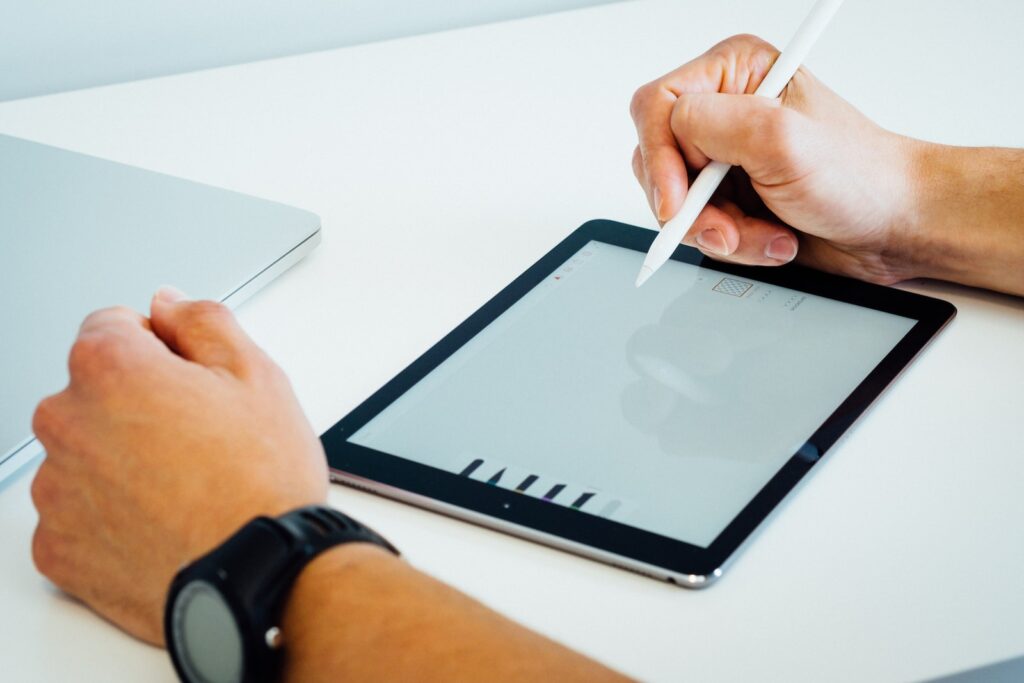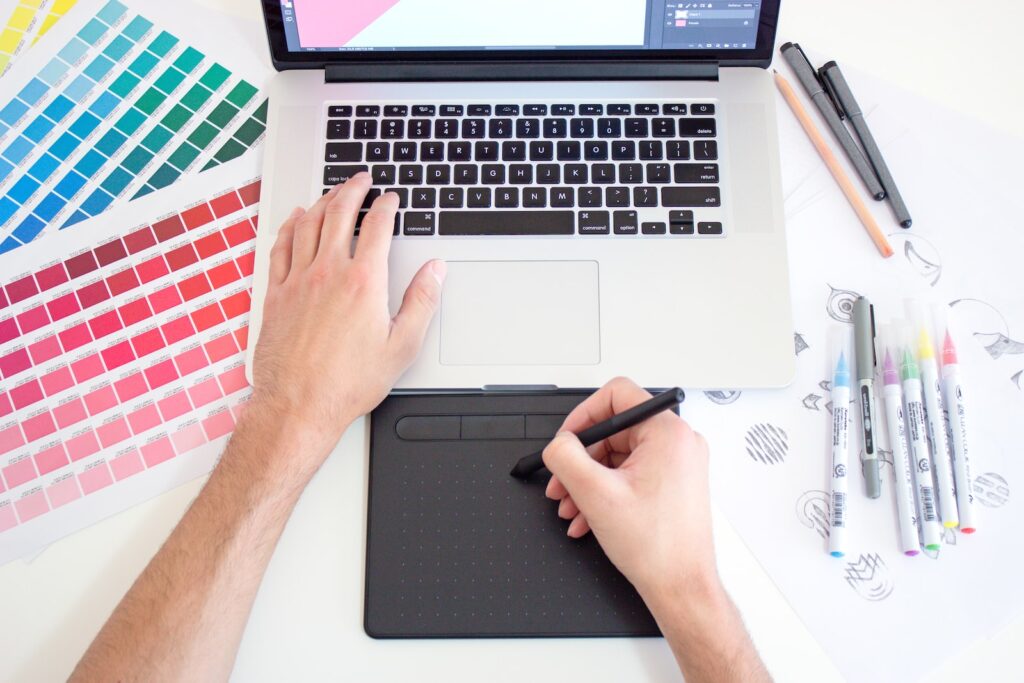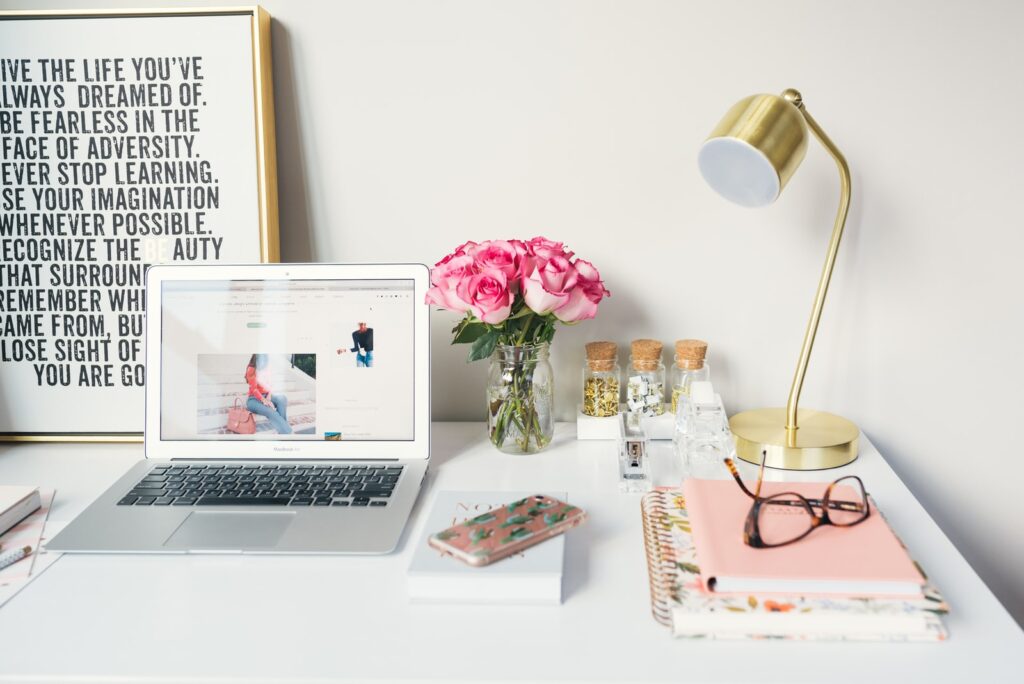How to Balance Aesthetics and Functionality in Web Design

When designing a website, one of the biggest challenges is finding the perfect balance between aesthetics and functionality. A visually stunning site may capture attention, but if it’s hard to navigate or lacks clear purpose, visitors will quickly leave. Conversely, a highly functional website that looks outdated or cluttered can struggle to engage users. To create a successful website, it’s crucial to strike a harmonious blend of beauty and usability. Here are some practical tips on how to balance aesthetics and functionality in web design. 1. Start with Purposeful Design Every web design project should begin with a clear understanding of the site’s goals. Whether you’re building an eCommerce store, a personal blog, or a corporate website, functionality should be the foundation. What are you trying to achieve with the site? What actions do you want visitors to take? Understanding the user’s journey will guide the design process. From the layout to the content structure, everything should serve a specific purpose. Once you’ve established the functional goals, you can introduce aesthetic elements that complement the experience rather than overpower it. This approach ensures that beauty supports functionality, rather than distracting from it. 2. Prioritize User Experience (UX) User experience is one of the most important aspects of a well-designed website. Even the most beautiful site won’t succeed if users struggle to navigate or interact with it. Prioritizing UX means putting yourself in the visitor’s shoes and making their journey through the site as seamless as possible. When designing for functionality, ensure your navigation is intuitive. Use logical categories, simple menus, and clear labels. Visitors should be able to find what they’re looking for within seconds. An effective search bar can also be a game-changer on larger websites. From an aesthetic standpoint, consider clean and minimalistic design elements that enhance clarity. Too much visual clutter can overwhelm users. The goal is to guide them naturally through the content while ensuring the design remains visually appealing. 3. Choose the Right Color Scheme Color is one of the most powerful tools in web design, influencing both aesthetics and functionality. A well-chosen color scheme can evoke emotions, reinforce branding, and make a site more enjoyable to use. However, going overboard with too many colors or clashing tones can create a chaotic look that hinders usability. When balancing color, keep it simple. Use a primary color palette that aligns with your brand identity, and complement it with a few secondary shades. Contrast is key for functionality. Ensure that text stands out from the background—light text on a dark background, or vice versa—so it’s easy to read. Additionally, use color strategically to draw attention to important elements like buttons, links, or calls to action. 4. Focus on Typography Typography is a key element that influences both design aesthetics and readability. The fonts you choose should be easy on the eyes, but they also play a big role in the overall feel of the site. A playful font may work for a creative agency but feel out of place on a corporate website. To strike the right balance, opt for clean, readable fonts for body text and experiment with more distinctive fonts for headings or logos. Make sure the font size is appropriate—especially for mobile users—so that visitors don’t have to zoom in to read the content. Functionality is also impacted by typography in terms of hierarchy. Use different font sizes, weights, and styles to guide users’ attention through the page. Proper use of headings (H1, H2, H3) not only helps with readability but also improves SEO. 5. Maintain Visual Consistency Consistency in design is a key principle that bridges aesthetics and functionality. A consistent visual style across pages creates a cohesive look and feel that builds trust with users. It also makes navigation smoother, as users know what to expect. This includes maintaining uniformity in color schemes, typography, button styles, and imagery. For example, if your homepage uses minimalist icons, continue that style on the rest of the site. Avoid switching between radically different design elements, as it can confuse users and disrupt the experience. 6. Optimize for Mobile With mobile browsing on the rise, designing a website that works seamlessly across devices is crucial for both aesthetics and functionality. Mobile users expect fast-loading, responsive designs that adapt to smaller screens without losing quality or usability. A functional mobile design means making navigation easy with touch-friendly buttons, collapsible menus, and readable text. For aesthetics, focus on clean layouts that don’t overwhelm users with too much information on one page. The goal is to deliver a beautiful and functional experience, whether someone is viewing the site on a smartphone, tablet, or desktop. 7. Incorporate Visual Hierarchy Visual hierarchy helps guide users through your content and ensures the most important elements stand out. It’s a technique that blends aesthetics and functionality by organizing content in a way that naturally leads the viewer’s eye. For functionality, this means prioritizing key elements such as headlines, calls to action, and important content. Larger fonts, bold colors, or prominent placement at the top of the page can emphasize these elements. From an aesthetic perspective, using whitespace around important elements can make them pop, while maintaining a clean, uncluttered look. A well-structured visual hierarchy not only enhances the user experience but also improves conversion rates by directing visitors toward the actions you want them to take. 8. Test and Iterate Web design is not a one-size-fits-all process, and it often requires adjustments based on user feedback. Regularly test your website to identify pain points that might affect either functionality or aesthetics. Heatmaps, user behavior analytics, and A/B testing are excellent tools to gauge how visitors interact with your site. This data will help you fine-tune areas that aren’t performing as expected. Iterating on your design allows you to maintain a balance between aesthetics and usability based on real-world interactions. Conclusion Achieving the perfect balance between aesthetics and functionality in web design is both an art and a science. By focusing on user experience, maintaining visual consistency, and optimizing key elements
In-House vs. Outsourced Web Design: What’s Best for Your Brand?

When it comes to establishing a strong online presence, the design of your website plays a crucial role. As businesses navigate the complexities of web design, a key decision they face is whether to handle the process in-house or to outsource it to external professionals. Both approaches offer distinct advantages and challenges. To help you make an informed decision, let’s explore the benefits and drawbacks of in-house vs outsourced web design and determine what might be best for your brand. In-House Web Design: Pros and Cons Pros: Direct Communication: Having an in-house web design team facilitates direct and immediate communication. This means quicker decision-making, faster feedback, and the ability to align closely with the brand’s vision and objectives. Brand Familiarity: In-house designers are typically more familiar with the brand’s culture, values, and long-term goals. This intimate knowledge can translate into a website that more accurately reflects the brand’s identity and ethos. Ongoing Maintenance and Updates: An in-house team can handle ongoing website maintenance and updates more efficiently. This capability ensures that your website remains current and functional, addressing any issues promptly without waiting on external schedules. Cons: Higher Costs: Maintaining an in-house web design team can be expensive. Costs include salaries, benefits, training, and the necessary tools and software. For small businesses, these expenses can be prohibitive. Limited Expertise: An in-house team may have limited exposure to diverse projects and the latest industry trends. This limitation can result in a less innovative design compared to what a specialized agency might deliver. Resource Constraints: Small teams may struggle with large or complex projects due to resource constraints. This limitation can impact the quality and timeliness of the website design and development process. Outsourced Web Design: Pros and Cons Pros: Access to Expertise: Outsourcing web design allows you to leverage the expertise of professionals who specialize in various aspects of web development. Agencies often have diverse teams with a wide range of skills and experiences, leading to more innovative and high-quality designs. Cost-Effective: Outsourcing can be more cost-effective than maintaining an in-house team. You pay for the service as needed, without the ongoing costs associated with full-time employees. Scalability: Outsourcing offers scalability, enabling you to easily ramp up or down based on project requirements. This flexibility can be particularly beneficial for businesses experiencing growth or seasonal fluctuations. Cons: Communication Challenges: Working with an external team can sometimes lead to communication challenges. Time zone differences, misaligned schedules, and lack of face-to-face interaction can result in delays and misunderstandings. Less Control: Outsourcing can mean relinquishing some control over the design process. Ensuring that the external team fully understands and aligns with your brand’s vision requires clear communication and trust. Dependency: Relying on an external agency for web design can create a dependency. If the agency is not available or goes out of business, you may face challenges in maintaining or updating your website. In-House vs Outsourced Web Design: Which is Best for Your Brand? The choice between in-house and outsourced web design depends on several factors, including your budget, project scope, and long-term goals. In-House Web Design: Best for Large Enterprises: Companies with substantial resources and ongoing web design needs may benefit from an in-house team that can offer dedicated support and quick turnaround times. Ideal for Continuous Projects: If your website requires frequent updates, changes, or specific alignment with brand campaigns, an in-house team can provide the necessary agility and consistency. Outsourced Web Design: Suitable for Small to Medium Businesses: Businesses with limited budgets can leverage the expertise of specialized agencies without the overhead costs of an in-house team. Perfect for One-Time Projects: For major redesigns or new website launches, outsourcing can provide access to advanced skills and innovative solutions without a long-term commitment. Conclusion Both in-house and outsourced web design approaches have their unique advantages and potential challenges. An in-house team offers closer alignment with your brand and faster updates, while outsourcing provides cost-effective access to specialized expertise and scalability. Your decision should be guided by your specific business needs, budget, and long-term objectives. By carefully considering these factors, you can choose the web design strategy that will best support and enhance your brand’s online presence.
How to Find the Best Graphic Logo Designer

Graphic logo design is an important part of any successful business. In today’s world, having a strong and effective graphic image can mean the difference between success and failure. Although there are hundreds of great logos out there, it can be difficult to find the best one for your business or product. This article will give you some tips for finding a quality graphic logo designer. 1. Ask for Referrals The first step in locating a quality graphic designer is to ask for referrals from people you know. If you’re looking for someone locally, city magazines can be an excellent resource. Ask friends and family if they can recommend anyone. Check the Yellow Pages, too – there are some great designers listed that specialize in graphic logo design. 2. Set a Budget Not all graphic designers are the same. Some are better than others, and some charge more, too. Before you begin shopping for a designer, set a budget for yourself. This will help you to narrow your search down to designers who work within your price range. 3. Look at Sample Work Once you have an idea of the budget you want to work with, begin looking at sample work from several graphic designers in that price range. Look for a designer who has a style that matches your own. You might also want to get a few samples of other styles and looks, just to see what else is out there. 4. Ask Questions When you find a graphic designer that you like, ask her all of the questions that you have about her work. Find out what kind of deadlines she gives and how she handles revisions, if necessary. Ask for references if possible, and always make sure that you completely understand her contract before signing it. 5. Honesty is Key Too many people go shopping for a designer who promises to give them exactly what they want, but when the final project is presented, the results turn out to be less than expected. If you have specific ideas about what you want your design to look like, communicate those ideas clearly and honestly with your designer. Let her know if certain elements are non-negotiable. 6. Be Realistic There will always be times when a more expensive designer can’t offer you exactly what you’re looking for. If it comes down to a choice between spending a little more money or having someone else handle the project, it’s probably best to spend a little more money. 7. Be Flexible The whole concept of graphic logo design is that it’s an ongoing process so always have some flexibility in your budget. Be willing to go over your allotted budget if necessary to get exactly what you want. Conclusion Finding a good graphic designer can be difficult, but with the right tips, you should have no problem locating a graphic designer who can produce exactly what you want. Always keep in mind that it’s better to pay more and get something that you like than it is to pay less and end up with something that looks like everyone else’s logo. Good luck!
10 Websites That Will Help You Boost Your Graphic Design Skills

If you’re a graphic designer, it’s important to keep your skills sharp. After all, your work is only as good as your last project. Thankfully, there are a number of great websites that can help you boost your graphic design skills. Here are five of the best: 1. Canva – https://www.canva.com/ Canva is a graphic design platform that allows users to create professional designs without any prior experience or design knowledge. The platform is easy to use and provides users with a wide range of templates, photos, and fonts to choose from. With Canva, anyone can create beautiful designs for their business or personal projects. 2. Behance – https://www.behance.net/ Behance is a portfolio platform for creative professionals across all industries, including graphic design. The site allows users to showcase their work, connect with other creatives, and find new opportunities. Behance is an excellent resource for designers looking to network and get inspired by others in the field. 3. Dribbble – https://dribbble.com/ Dribbble is a community of graphic designers of all skill levels who share their work, give and receive feedback, and find inspiration. The site is also a great resource for designers looking for jobs, as many companies post openings on Dribbble. 4. Awwwards – https://www.awwwards.com/ Awwwards is a website that recognizes and showcases the best web design in the world. The site features a gallery of award-winning websites, as well as articles and resources on web design trends and best practices. Awwwards is a great source of inspiration for designers of all levels. 5. Photoshop Tutorials – https://www.photoshop-tutorials.net/ Photoshop Tutorials is a website dedicated to providing high-quality tutorials on Photoshop, one of the most popular graphic design software programs. The site features tutorials on a wide range of topics, from basic photo editing to advanced graphic design techniques. 6. Illustrator Tutorials – https://www.illustratortutorials.net/ Illustrator Tutorials is a website dedicated to providing high-quality tutorials on Adobe Illustrator, another popular graphic design software program. The site features tutorials on a wide range of topics, from basic vector illustrations to advanced graphic design techniques. 7. Inkscape Tutorials – https://www.inkscapetutorials.net/ Inkscape Tutorials is a website dedicated to providing high-quality tutorials on Inkscape, a free and open-source vector graphic design program. The site features tutorials on a wide range of topics, from basic vector illustrations to advanced graphic design techniques. 8. Graphic Design Stack Exchange – https://graphicdesign.stackexchange.com/ Graphic Design Stack Exchange is a question and answer site for graphic designers and other creative professionals. The site is a great resource for designers looking for answers to specific questions or general advice on graphic design topics. 9. Designspiration – https://www.designspiration.net/ Designspiration is a visual search engine and inspiration board for designers of all types. The site allows users to search for specific design elements or browse through a variety of categories, such as color, typography, and layout. Designspiration is an excellent resource for designers looking for inspiration for their next project. 10. Creative Market – https://creativemarket.com/ Creative Market is a marketplace for creative professionals, including graphic designers. The site features a wide range of creative assets, such as fonts, graphics, templates, and photos. Creative Market is a great resource for designers looking for high-quality resources to use in their projects.. These are just a few of the great websites that can help you boost your graphic design skills. So be sure to bookmark them and check back often. With a little effort, you’ll be able to take your work to the next level.
20 Fun Facts About Web Design

Web design is more than just how a website looks. There’s actually a lot of love and science that goes behind it. If you’re a big fan of the ins and outs of wed design, then you might appreciate this list of fun facts we’ve discovered about it. It takes an average of 50 milliseconds for users to form an opinion about your website. That’s less than the time it takes to blink! Most people will make their decision about whether they like your site or not based on its aesthetics – that is, how it looks. Good web design isn’t just about pretty pictures – it’s also about creating a user-friendly experience. Users should be able to find what they’re looking for easily and navigation should be intuitive. Conversion rates are significantly higher for websites with a well-designed home page. In fact, one study found that a poor home page design can cost you up to 80% of potential customers! The average user spends less than 15 seconds on a webpage before deciding whether to stay or leave. That means you have a very limited amount of time to make a good impression! A study by Google found that 61% of users are more likely to buy from a mobile-friendly site. With more and more people using their smartphones and tablets to browse the web, it’s essential that your website is designed with them in mind. Good web design is responsive – that is, it adjusts itself to look great no matter what device it’s being viewed on. This is crucial in today’s multi-screen world, where users might view your site on a desktop one minute and a smartphone the next. Most users will leave a website if it takes more than 3 seconds to load. That means you need to make sure your site is as fast and responsive as possible! A study by Adobe found that 75% of users never scroll past the first page of search results. That means if your website isn’t ranking highly on Google, chances are people will never even see it. User attention span has decreased significantly in recent years – in 2000, it was 12 seconds, but by 2013 it had dropped to 8 seconds. This means you have an even shorter window of time to grab users’ attention and keep them engaged with your site. Webpages with video are 50 times more likely to appear on the first page of Google search results than those without. This is because Google’s algorithm favors websites that offer a rich, multimedia experience. The average user will read only 20% of the text on a webpage before making a decision about whether to stay or leave. That means it’s crucial that your content is well-written and to the point! Most users will make a decision about whether they trust your website within the first 10 seconds. That means you need to make sure your site looks professional and credible, or you risk losing potential customers. A study by Microsoft found that people are more likely to recall information if it’s presented in a visually appealing way. This means that your website should not only be informative, but also visually engaging. A study by Forrester Research found that 46% of users believe that a website’s design is the number one factor in determining whether a company is credible or not. This means that your website’s design is crucial in establishing trust with potential customers. The average user will make an assessment about your website within 50 milliseconds – that’s less time than it takes to blink! This means you have a very limited amount of time to make a good first impression. Most people will base their opinion of your website on its color scheme. This means that you need to carefully choose colors that convey the right message about your brand. A study by Jakob Nielsen found that users will often leave a website if they find it difficult to use. This means that your site should be easy to navigate and user-friendly. The average user will only wait 6 seconds for a webpage to load before moving on to something else. This means you need to make sure your site is as fast and responsive as possible! Good web design is essential in today’s competitive online landscape – if your site isn’t up to par, you’re likely to lose potential customers to your competitors. Web design is a crucial part of any business’s online presence – if your site isn’t up to par, you’re likely to lose potential customers to your competitors. Make sure your site is designed for success with these 20 surprising facts about web design! Check out this famous website builder: webdesign-inspiration.com/blog/reviews/divi
